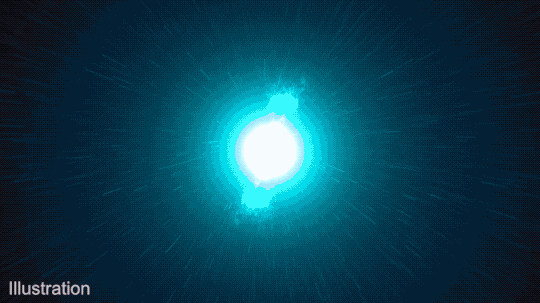This record-breaking black hole could solve a galactic mystery billions of years in the making
NASA imaged the oldest and most distant black hole ever seen. The void's huge mass and age may provide researchers with more insights into how black holes are formed.

The most distant and oldest black hole ever seen using NASA telescopes may explain how some of the celestial voids in the universe formed, according to the agency's Chandra X-ray Observatory.
A black hole 13.2 billion light-years from Earth was spotted at the center of the UHZ1 galaxy using the Chandra X-ray Observatory and the agency's James Webb Space Telescope. It was formed 470 million years after the big bang, which occurred 13.8 billion years ago, making it the oldest ever discovered, according to NASA.
The NASA images captured the black hole at a stage of growth that's never been seen before, according to the Chandra X-ray Observatory. The voids' distance from Earth means the images are effectively a view from the past, from a time when the universe was only 3% of its current age.
The structure is also huge, having an estimated mass between 10 million and 100 million suns, according to a study published Monday in Nature Astronomy.
Due to UHZ1's age and abnormally large mass, scientists believe the structure provides clues to how "outsize black holes" are created.
"We think that this is the first detection of an ‘Outsize Black Hole’ and the best evidence yet obtained that some black holes form from massive clouds of gas," said Priyamvada Natarajan, a Yale University researcher who co-authored the study. "For the first time, we are seeing a brief stage where a supermassive black hole weighs about as much as the stars in its galaxy, before it falls behind."
The newly seen void is so large that the black hole's mass is similar to the entire mass of everything within the host galaxy.
There are two theories to explain the formation of black holes. One is that they form when a star explodes in a supernova or from a collision between stars, according to NASA. The other is that black holes, particularly "outsize black holes," are formed when massive galactic gas clouds collapse.
Chandra X-ray Observatory considers the discovery of the UHZ1 void the best evidence that some early black holes formed from huge clouds of gas.
"There are physical limits on how quickly black holes can grow once they’ve formed, but ones that are born more massive have a head start," said Andy Goulding, a Princeton researcher and another author of the study. "It’s like planting a sapling, which takes less time to grow into a full-size tree than if you started with only a seed."
The brightness and energy of the X-rays emitted from UHZ1 indicate that the black hole was born massive, according to the Chandra X-ray Observatory.






















